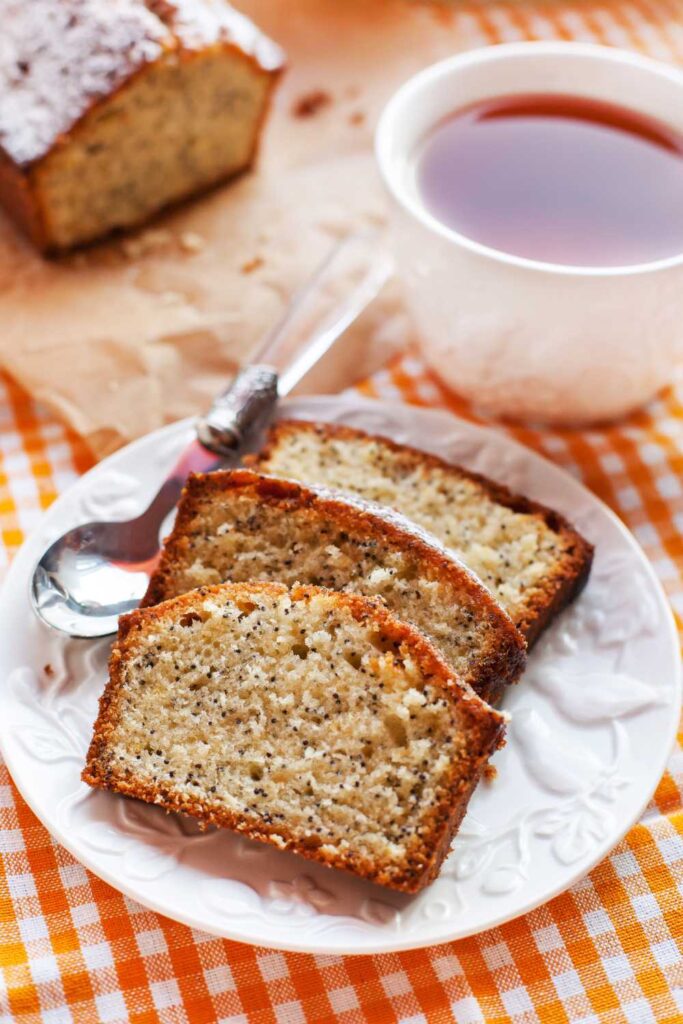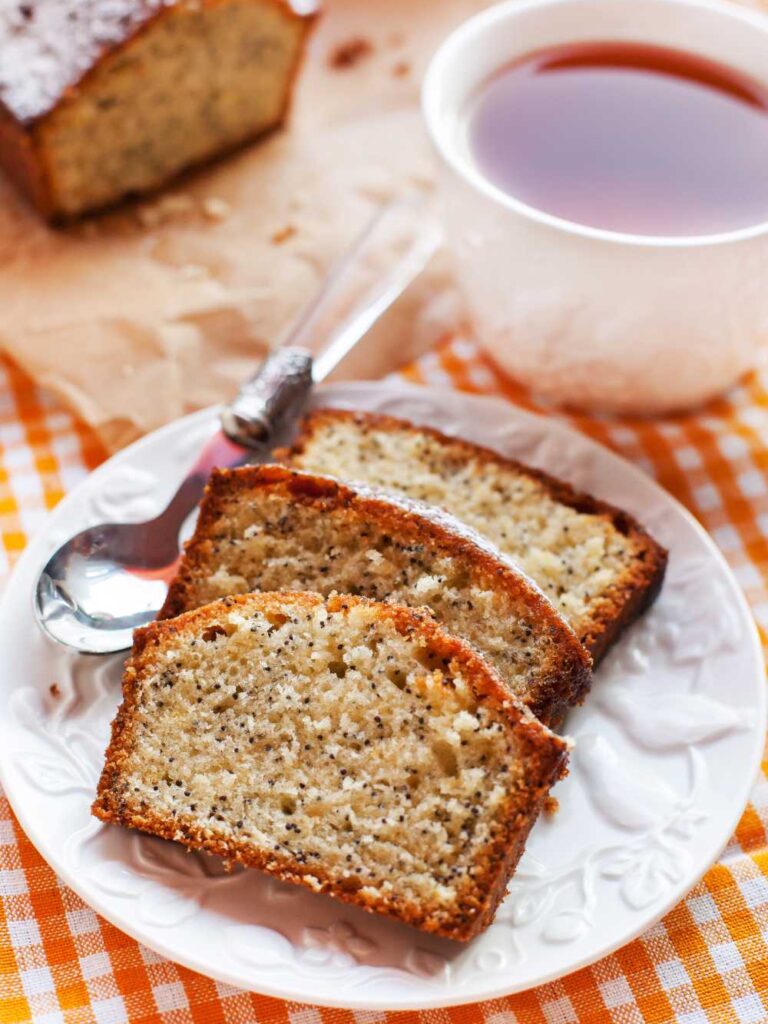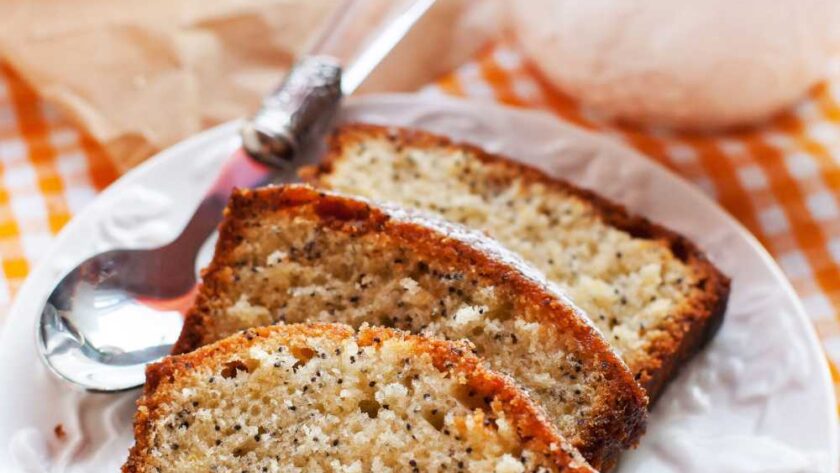There’s something delightfully old-fashioned about a caraway seed cake — the kind of slice that feels like it’s come from another time. My gran used to call it her “grown-up cake,” even though we were allowed a piece now and then… as long as we didn’t pick out the seeds (which, obviously, I did).
The smell alone is transportive. That mix of warm butter, soft vanilla, and those strange little aniseed-y caraway seeds wafting through the kitchen — it always made me feel calm, like nothing urgent was happening for a while. If you’ve never had caraway in a cake, think of it as a cozy twist on a classic sponge — subtle, a little herbal, and really quite lovely.
This is Mary Berry’s classic recipe, but I’ve made it so many times that my copy’s splattered and the page’s all curled at the corners. Honestly? That’s how you know it’s a keeper.
Why You’ll Love It
- It’s a throwback bake. This one tastes like something you’d find under a glass dome in a village hall. Old school, in the best way.
- You don’t need a mixer. Just a bowl, a spoon, and maybe a sturdy arm for creaming butter (but hey, count it as arm day).
- Keeps like a dream. It gets even better the next day — more mellow, more buttery.
- Unusual but subtle. Caraway seeds add a bit of mystery without screaming for attention.
- Tea’s perfect partner. This cake and a builder’s brew? A match made in British baking heaven.
- One bowl, no fuss. Everything gets thrown together in less time than it takes your oven to preheat.
Ingredients
- 225g all-purpose flour
- 2 tablespoons caraway seeds
- 225g unsalted butter, softened
- 225g caster sugar
- 4 large eggs
- 4 tablespoons milk
- 2 teaspoons baking powder
- A pinch of salt
- Zest of 1 lemon
- 1 teaspoon vanilla extract
How to Make It
Preheat and prep:
Get your oven going at 180°C (that’s 350°F for our friends across the pond). Grease and line a 9-inch round cake tin. I always forget to do this before I start mixing — don’t be me.
Whisk the dry bits:
In a bowl, mix together your flour and caraway seeds. If you’re using whole seeds, give them a little rub between your fingers to wake up their flavour. It smells like earthy licorice. Weirdly lovely.
Cream it good:
In another (bigger) bowl, beat your butter and sugar until pale and fluffy. I do this with a wooden spoon when I’m feeling nostalgic, but an electric whisk makes it far easier. No judgement either way.
Add your eggs, one at a time:
Crack in the eggs, beating after each one so the mix stays smooth. Don’t worry if it curdles slightly — the flour’s coming to save the day.
Fold in the flavour:
Add the milk, baking powder, salt, lemon zest, and vanilla. Give it all a gentle stir — don’t go mad, we’re not making bread here.
Combine and conquer:
Tip in your flour and caraway mixture. Fold it through with a light hand until just combined. If it’s a bit thick, add another splash of milk — the batter should just about drop off a spoon.
Into the tin and off it goes:
Spoon it into the tin and level the top. Pop it in the oven and bake for 45–50 minutes, until it’s golden and a skewer comes out clean. Mine took exactly 47 minutes last time — but who’s counting?
Let it rest (and you, too):
Cool in the tin for 10 minutes, then transfer to a wire rack. It smells ridiculously good at this point, so good luck not cutting into it early. But honestly? It’s even better once it’s cooled.

Common Mistakes and How to Dodge Them
The caraway’s too strong!
Two tablespoons might sound like a lot, but it’s traditional. If you’re not sure about the flavour, start with one and see how you like it.
Cake came out too dense?
You may have overmixed the batter or your baking powder wasn’t fresh. Stir just enough to combine.
Dry around the edges?
Check your oven temp — or next time, tent the cake with foil after 30 minutes if it’s browning too fast.
Cake stuck to the tin?
Grease well, line with parchment, and let it cool before removing. It’s delicate when hot.
Storage and Reheating
- Room Temp: Store in an airtight tin for up to 4 days. Honestly, it rarely lasts that long.
- Freezer: Wrap in foil and freeze for up to 3 months. I slice mine first so I can defrost one piece at a time.
- To Reheat:
- Microwave: 15–20 seconds per slice (don’t overdo it).
- Oven: 150°C for 5–7 minutes wrapped in foil.
- Toaster oven: Yes, it works. Go slow, low, and gentle.
Frequently Asked Questions
Can I swap the flour for self-raising?
Sure, just leave out the baking powder if you do.
How do I make this extra lemony?
Add a little lemon juice to the batter, or brush the warm cake with lemon syrup once it’s out the oven. Dreamy.
Do I need a mixer for this?
Not at all. A wooden spoon and a bit of elbow grease are just fine.
What’s the texture like?
Light, tender crumb. Think somewhere between a Victoria sponge and a pound cake.
Nutrition Facts (Per Serving)
- Calories: 400 kcal
- Fat: 20g
- Saturated Fat: 10g
- Carbs: 50g
- Sugars: 25g
- Protein: 6g
- Fibre: 2g
- Sodium: 250mg
Try More Mary Berry Recipes:

Mary Berry Caraway Seed Cake
Description
A tender, buttery sponge flecked with earthy caraway seeds and a touch of lemon zest — a nostalgic bake perfect with tea.
Ingredients
Instructions
- Preheat oven to 180°C (350°F), grease a 9-inch cake tin.
- Whisk flour and caraway seeds together.
- Cream butter and sugar until fluffy.
- Beat in eggs one by one.
- Stir in milk, baking powder, salt, lemon zest, and vanilla.
- Gently fold in flour mix.
- Pour into tin and bake for 45–50 minutes.
- Cool for 10 mins in tin, then on a rack.
Notes
- Don’t overmix — a light hand gives the best crumb.
- Use less caraway if you’re new to the flavour.
- Lining the tin helps prevent sticking.
- Tastes even better the next day.

